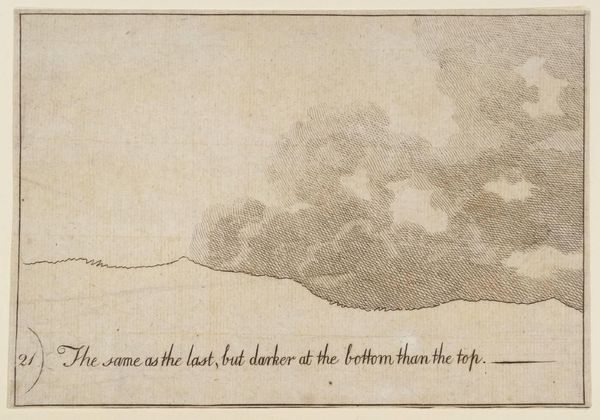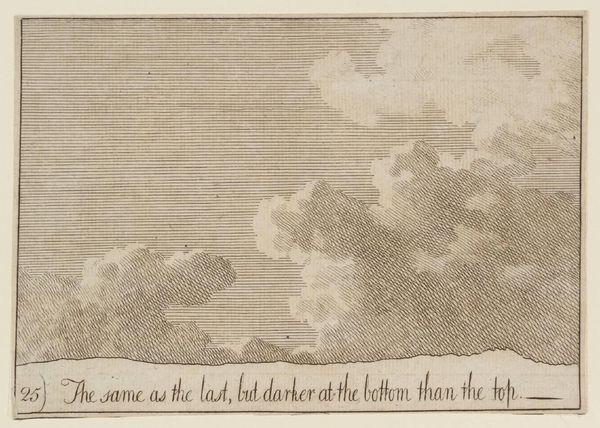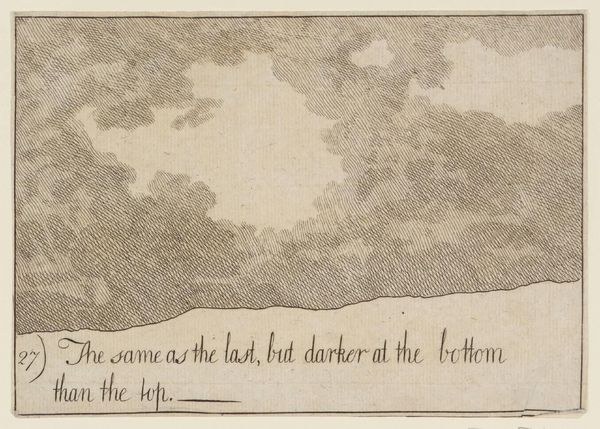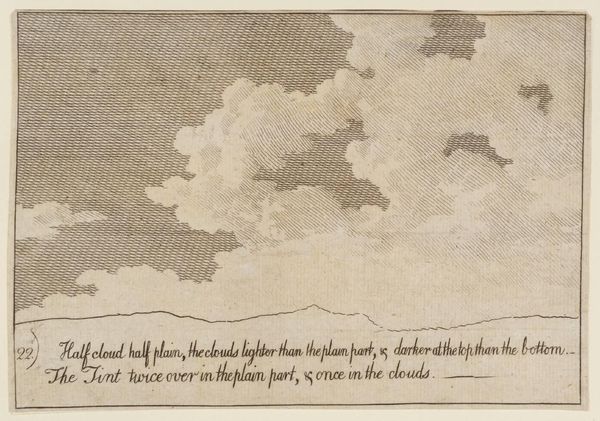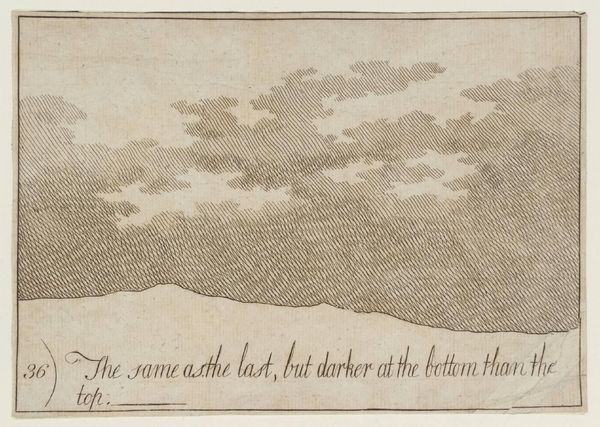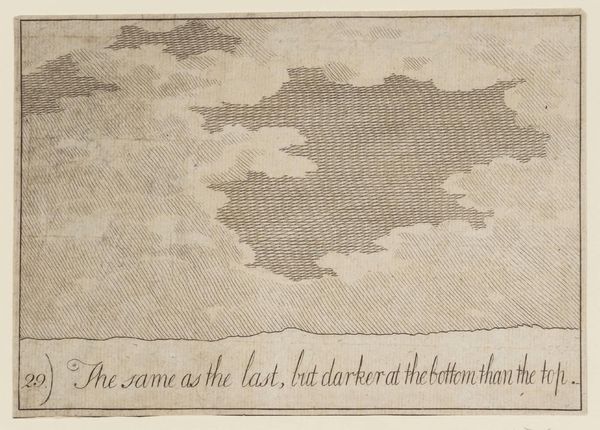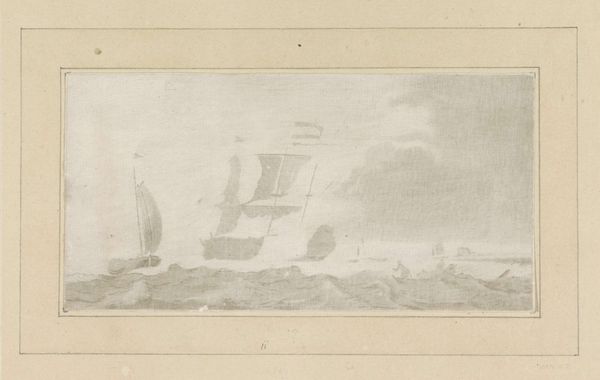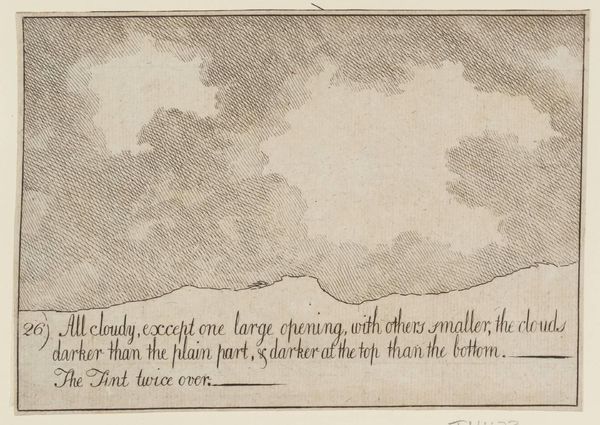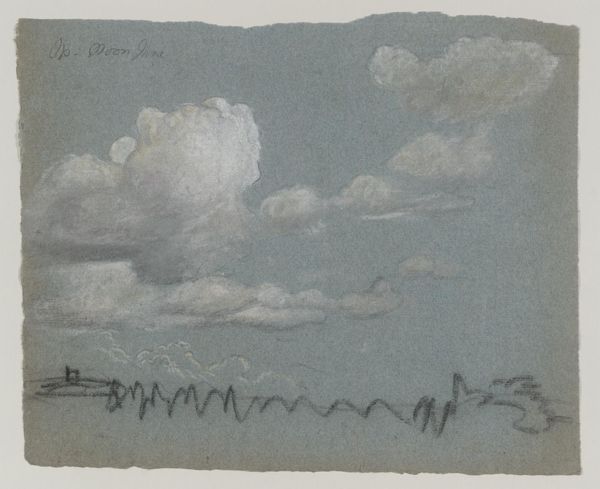
Dimensions: image: 110 x 155 mm
Copyright: CC-BY-NC-ND 4.0 DEED, Photo: Tate
Curator: Alexander Cozens, a landscape painter born in 1717, is the creator of this etching titled, "31. The Same as the Last, but Darker at the Bottom than the Top." It's quite small, only about 110 by 155 mm. Editor: My immediate impression is one of confinement—the hatching feels dense, almost claustrophobic, suggesting a storm brewing or perhaps the oppressive weight of the industrial revolution. Curator: It's interesting that you interpret it that way. Cozens was actually trying to create a universal system for landscape composition, a kind of kit for artists. These weren’t meant to be literal depictions of nature. Editor: But even in a system, there's room for interpretation. Consider the materials he chose – etching, accessible and reproducible. Was he democratizing art, making landscape accessible beyond the landed gentry? Curator: Possibly, but he was also marketing these "blots" as a tool for professionals. It’s about artistic production and consumption within a developing art market. Editor: Precisely, so it does both, democratizes while also capitalizing. The very title, "The Same as the Last," speaks to seriality, to mass production, but also to the cyclical nature of oppression. Curator: I see your point about the potential for multiple readings. Viewing art through a material lens illuminates its economic and social dimensions. Editor: And viewing it through an activist lens reminds us that art is never truly neutral; it always reflects and shapes the world around it.

